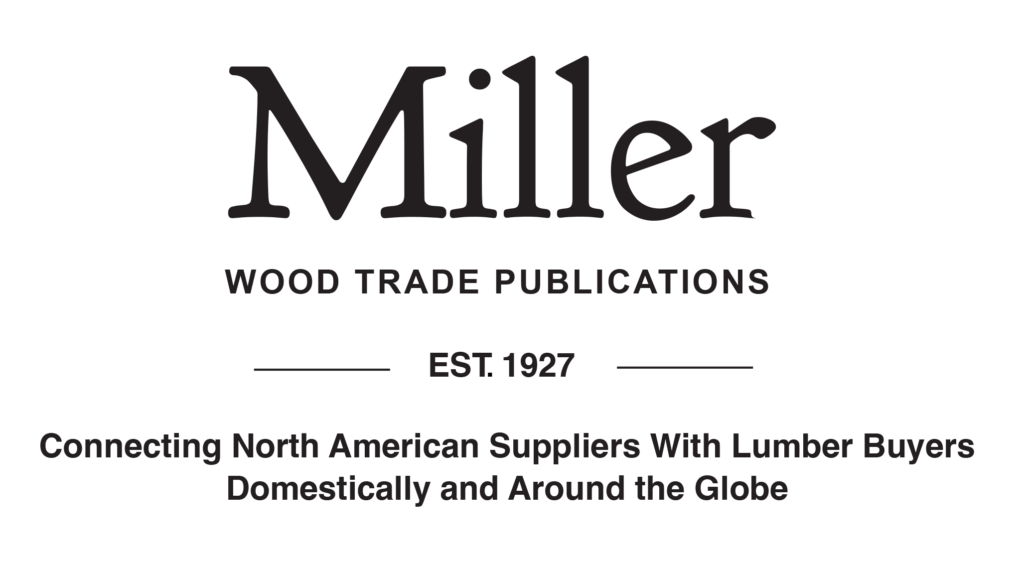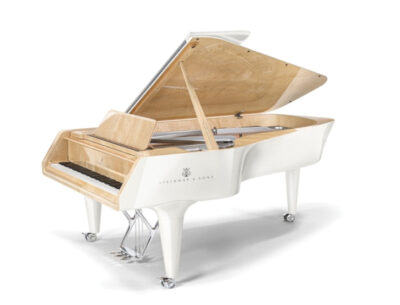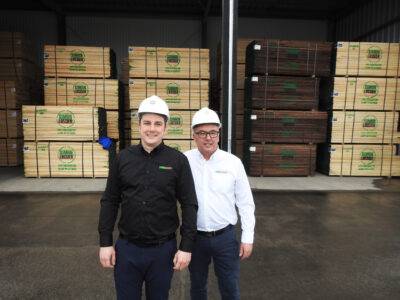Efforts To Remain In U.S. Wood Trade
Vietnam – Reciprocal tariffs present a major hurdle for Vietnam’s wood exports to the United States. However, domestic wood businesses are making strong efforts to maintain their position in this export market.
Despite concerns over potential barriers, Vietnam’s wood and wood product exports to the U.S. have continued to grow. According to the most recent data available at press time, in April 2025, shipments to the U.S. rose by 4 percent, total export value reaching $2.9 billion USD, which is up 10 percent from 2024.
Currently, the U.S. accounts for more than half of Vietnam’s total wood and wood product exports—54.4 percent, slightly higher than last year. These figures reflect both the strategic importance of the U.S. market and an apparent acceleration of shipments, likely due to the U.S. government’s temporary suspension of tariffs. At the same time, they underscore Vietnam’s growing dependence on the American market.
Should tariffs be fully implemented, redirecting exports to alternative destinations will be difficult. The scale of the U.S. market is unmatched, and its specific requirements for wood products often differs from those in other countries. Products developed for American consumers may not meet the standards or preferences of other markets.
To mitigate risk, Vietnamese companies are not only working to streamline shipments to the U.S. but are also hoping that the tariffs will remain manageable. American importers, for their part, face a challenge in sourcing alternatives. Vietnamese wood products currently make up nearly half of all U.S. wood imports while China, the second-largest supplier, is already subject to steep tariffs, limiting its competitiveness.
In a show of goodwill and to help balance trade, Vietnam is also prioritizing the purchase of raw wood materials from the U.S. According to Mr. Ngo Sy Hoai, Vice Chairman of the Viet Nam Timber and Forest Product Association, “U.S. timber suppliers are struggling with reduced access to the Chinese market due to ongoing tariff disputes. By increasing imports of U.S. logs and sawn wood, Vietnam is contributing to easing trade imbalances and strengthening bilateral ties.”
This strategy also serves a practical purpose: Vietnamese manufacturers can reduce the impact of reciprocal tariffs by using U.S.-origin timber in their products. “Products containing at least 20 percent U.S.-origin inputs are only subject to tariffs on their non-U.S. components,” said Mr. Do Ngoc Hung, Vietnam’s Commercial Counselor in the United States.
Recent trade statistics support this trend. In the first quarter of 2025, Vietnam imported 191,000 cubic meters of U.S. timber, valued at nearly $79 million USD. This marks a 34 percent increase in volume and a 28 percent increase in value compared to 2024.
Many Vietnamese exporters are determined to retain their share of the U.S. market. One growing solution is expanding direct-to-consumer sales via e-commerce platforms such as Wayfair and Amazon. Alongside efforts to sustain its U.S. presence, Vietnam’s wood industry is also actively diversifying its export portfolio. China, Japan, India, the United Kingdom, Canada, Australia, and several Middle Eastern countries are among the most promising alternative markets.
Reforestation On The Rise
Germany – The condition of German forests remains alarming. According to the current 2024 Forest Condition Survey of the Federal Ministry of Agriculture, Food and Homeland Affairs (BMLEH), four out of five trees still show damage. The situation has barely improved compared to the previous year. Although the weather in 2024 was more favorable than in previous years, Spruce, Pine, Beech, and Oak continue to suffer from the aftereffects of prolonged droughts and above-average temperatures since 2018.
Alois Rainer, Federal Minister of Agriculture, Food and Homeland said, “The treetops are a seismograph for the condition of the trees. A look up into the treetops shows our forests are under constant stress. I see this in my own forest as well as everywhere else in the country. Heat, drought and pests continue to take their toll on our forests.
Only one in five trees is still in full green. We need healthy, stable forests for future generations. That’s why we’re easing the burden on forest owners instead of burdening them with unnecessary bureaucracy. We’re investing in reforestation and forest conversion, in research and knowledge transfer – and thus strengthening sustainable forest management. Forest use and forest conversion are active climate protection.”
For the years 2019 to 2024, the federal states reported a total reforestation need of approximately 525,000 hectares.
Since 2022, the federal and state governments have jointly invested more than €200 million in reforestation and forest conversion on almost 50,000 hectares of forest area through the Joint Task for Agricultural and Coastal Protection. Together with the BMLEH and Environment’s “Climate-Adapted Forest Management” funding program, which has a financial volume of approximately €135 million per year, this provides the necessary funds for investments in reforestation, development and forest conservation. The funding program currently reaches approximately 1.5 million hectares of private and municipal forests.
U.S. Imports Down And Canadian Imports Up
Global – According to the most recent data, the U.S. imports of sawn tropical hardwoods fell 7 percent, reversing the previous gains. Total imports reached 14,479 cubic meters, down 9 percent.
The decline was driven by sharp drops from key suppliers. Imports from Brazil, last year’s top source, fell 32 percent and are now 58 percent lower year-to-date. Shipments from Congo (Brazzaville) and Malaysia also contracted significantly, dropping 26 percent and 21 percent, respectively. Meanwhile, imports from Indonesia—the leading supplier so far this year—continued to grow, rising 26 percent month-on-month.
Sapelli imports saw a steep 32 percent monthly drop and are down 12 percent for the year. Overall, U.S. imports of sawn tropical hardwoods are down 7 percent year-to-date.
By contrast, Canadian imports rebounded strongly, rising 63 percent. Volumes were up 8 percent compared to the same month in 2024, with imports from Brazil, Bolivia, Congo (Zaire), and Congo (Brazzaville) all showing notable increases.
U.S. imports of tropical hardwood veneer surged 52 percent to over $3.1 million USD. Imports from Italy more than doubled, rising 138 percent from the previous month. Significant increases also came from Ghana (+63 percent) and Cote d’Ivoire (+67 percent). After a month of flat growth, year-to-date veneer imports are up 10 percent over 2024.
Tariffs Cause Competitive Edge
Malaysia – Malaysia’s timber exports may gain a competitive edge in the U.S. market due to higher tariffs imposed on regional rivals such as Vietnam and Indonesia.
Vietnam, once a leading furniture exporter in the region, now faces tariffs as high as 46 percent compared with Malaysia’s import levy of 24 percent, Forest Research Institute Malaysia (FRIM) director of forest products division Wan Tarmeze Wan Ariffin said. “U.S. President Donald Trump imposed higher tariffs on Vietnam probably because they’re afraid China might use Vietnam as a manufacturing hub to bypass American trade restrictions,” he told Bernama.
The tariffs previously announced had been paused for 90 days to allow America’s trading partners to negotiate for lower tariffs. In 2022, Malaysia exported timber and timber products worth RM7.73 billion to the U.S. This was an increase from RM3.76 billion in 2018.
“If they don’t impose high tariffs on Vietnam, China could exploit that route. So, on paper, the advantage actually lies with us (Malaysia),” said Wan Tarmeze. The United States is currently the largest buyer of Malaysian furniture, accounting for over half of furniture exports. Malaysia’s timber exports worldwide include furniture, logs, veneer, plywood and medium-density fiberboard.
When asked about the challenges faced by the timber industry, Wan Tarmeze said Malaysia’s furniture sector primarily relies on processed wood rather than solid timber, with wood-based materials accounting for up to 85 percent of inputs in the making of the furniture.
Wan Tarmeze said the ongoing Iran-Israel military conflict is not expected to have a direct impact on Malaysia’s timber exports. Nevertheless, post-conflict reconstruction could open new market opportunities and raise demand for Malaysian timber. “Wars often lead to widespread destruction, but once the situation stabilizes, there’s usually a surge in demand for rebuilding – including homes and infrastructure,” he said.
When asked how Malaysia can position itself as a high-value timber exporter rather than a volume-based player, he said the shift ultimately depends on the industry players themselves. “This has been a long-standing conversation as Malaysia is still heavily reliant on the original equipment manufacturer (OEM) model, manufacturing timber products for others without having its own strong, internationally recognized brands.
“Take IKEA for example, which is a Swedish brand while Italy has its own well-known brand names, but Malaysia has yet to produce a brand that stands out globally,” Wan Tarmeze said. OEM refers to manufacturing products for other brands, whereas original brand manufacturers (OBM) involve developing and marketing products under one’s own brand name.
Wan Tarmeze said that despite the government’s repeated calls for the industry to move from being OEM to OBM, the shift has yet to happen. “The issue is not about identity but branding, and without branding we can’t build value.
“The truth is Malaysia tends to shy away from copying, but we should be more open to learning from others, even ‘stealing’ ideas in the sense of adapting best practices and making them our own,” he said.
ITC Sides With U.S. Hardwood Producers
Global – Before this press release in July 2025, the U.S. International Trade Commission (ITC) determined there is a reasonable indication of material injury to domestic hardwood and decorative plywood (HWDP) producers caused by low-priced and subsidized imports from China, Indonesia and Vietnam. This landmark preliminary determination, reached after years of mounting petitions by the Coalition for Fair Trade in Hardwood Plywood, marks a significant step forward for the U.S. panel sector.
The coalition represents leading U.S. manufacturers—such as Columbia Forest Products, Manthei Wood Products, States Industries, and Timber Products—who filed antidumping and countervailing duty petitions in May 2025. The ITC’s decision now clears the way for the U.S. Department of Commerce to move forward with its own investigations into pricing and subsidy practices.
The Department of Commerce has flagged eye-watering preliminary dumping margins and subsidy allegations with China up to 540 percent, Indonesia up to 85 percent and Vietnam up to 152 percent. Investigators are also examining government subsidy schemes—33 in China, 12 in Indonesia, and 26 in Vietnam—to determine their impact on U.S. market access.
If positive preliminary findings are confirmed in the Commerce report, provisional anti-dumping and countervailing duties will be imposed in late 2025, with a minimum 5-year duration for any formal orders.
Industry counsel Timothy Brightbill, representing the Coalition, argued that U.S. manufacturers and thousands of associated jobs are at risk due to unfairly priced and subsidized imports. The ITC’s affirmative ruling now triggers the next phase of investigation, and U.S. producers are hopeful that favorable trade rulings will restore a level playing field—supporting competitiveness and job retention in a vital production segment.
The next key milestones to keep an eye on are early August 2025, Commerce issues preliminary countervailing duty findings, late October 2025, Commerce releases preliminary anti-dumping duty determinations, and early January 2026, Final determinations from both Commerce and ITC; duties could begin by spring if findings remain affirmative.
This development is part of a wider reshaping of global hardwood trade. With sustainability concerns rising, U.S. authorities are signaling a tougher stance to ensure domestic producers are not undercut by cheap imports or subsidized supply chains.
Should duty orders be implemented, importers will face steep tariffs, disrupting regional supply chains and reshaping market dynamics across North America—while sending a strong message to foreign exporters.
Recent Export Data
Brazil – According to recent data, in 2025 the Brazilian exports of wood-based products (except pulp and paper) decreased 12 percent in value compared to 2024, from $334.6 million USD to $294.9 million USD.
Pine sawn wood exports decreased 13 percent in value between 2024’s $64.1 million USD and 2025’s $55.7 million USD. In volume, exports decreased 13 percent over the same period, from 271,300 cu.m to 236,100 cu.m.
Tropical sawn wood exports increased 41 percent in volume, from 23,900 cu.m in 2024 to 33,700 cu.m in 2025. In value, exports increased 44 percent from $23.9 million USD to $33.7 million USD, over the same period.
Wooden furniture exports increased from $54.6 million USD in 2024 to $55.1 million USD in 2025, an increase of 1 percent.
First Signs Of Import Growth Since 2021
United Kingdom – UK timber and panel import volumes were 0.6 percent higher in 2025 than they were in 2024, reaching 2.26 million m3, according to the latest Timber Development UK (TDUK) figures. The figures represent the first growth on the previous year the sector has seen since 2021.
The start of the year was described by TDUK as ‘challenging’, with volumes falling 1 percent in January 2025, and 9 percent in February, but a 13 percent increase in volumes in March 2025 resulted in cumulative growth for the quarter as a whole.
Strong growth in volume was realized in OSB and engineered wood products. Softwood imports also grew by nearly 2 percent. The reduction in MDF volumes seen in 2025 is being measured against a strong performance in 2024.
Sawn and planed Pine import volumes increased strongly in the early months of 2025, with Pine volumes 32 percent higher in 2025 than in 2024 – an increase of more than 95,000m3. Most of this increase came from Sweden, but good import growth was also recorded from Norway, Germany, the Netherlands and Estonia.
The average prices of imported Pine also rose by 4 percent in 2025. Meanwhile, Whitewood import volumes were 10 percent lower.
Total softwood import values rose by 12 percent year-on-year, supported by a 2 percent increase in volume and a 10 percent rise in average prices to £268/m³. Redwood values soared by 37 percent and mixed species by 24 percent, while Whitewood values remained flat.
Hardwood import volumes declined by 2.8 percent, though key suppliers like the USA (+8 percent) and France (+4 percent) expanded their shipments. Tropical hardwoods grew nearly 3 percent in volume, led by Cameroon (+17 percent) and the DRC (+58 percent). In contrast, temperate hardwood volumes fell by 4 percent.
“While challenges remain across the construction landscape, it’s encouraging to see import growth and forecasts pointing to improvements in the housing and RMI sectors – both key markets for timber,” said TDUK Head of Technical and Trade, Nick Boulton.
TDUK said overall, 2025 has exceeded the sector’s low expectations, with stronger-than-expected volumes and a clear upward movement in pricing, especially across softwood.










